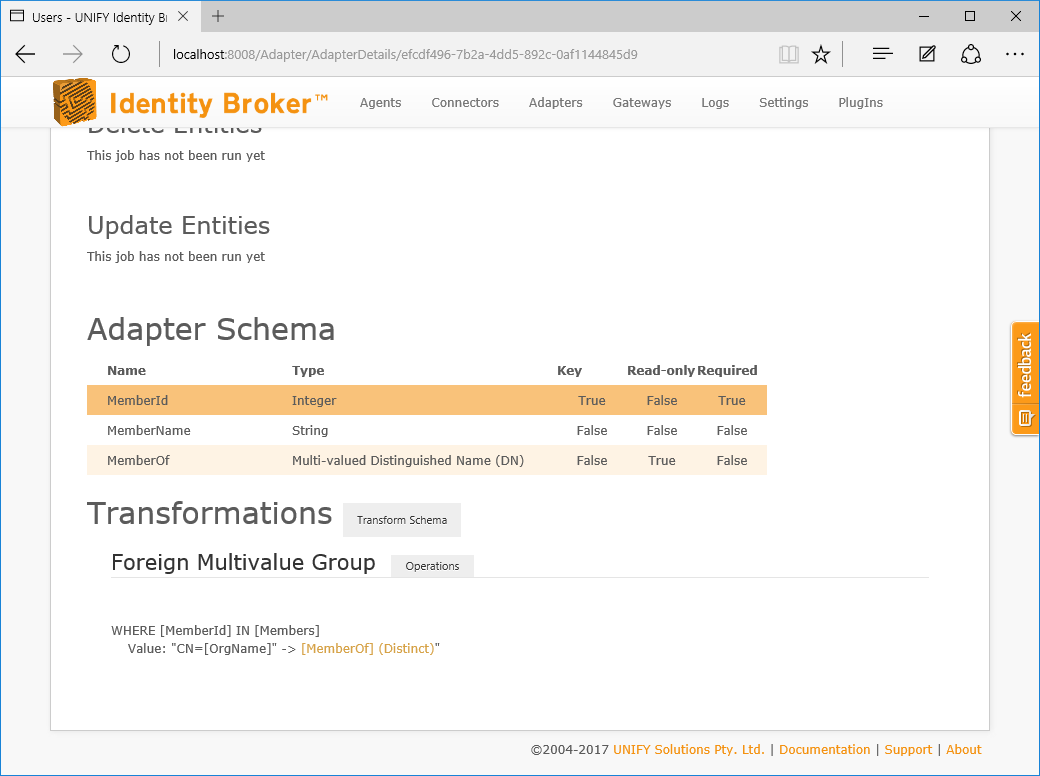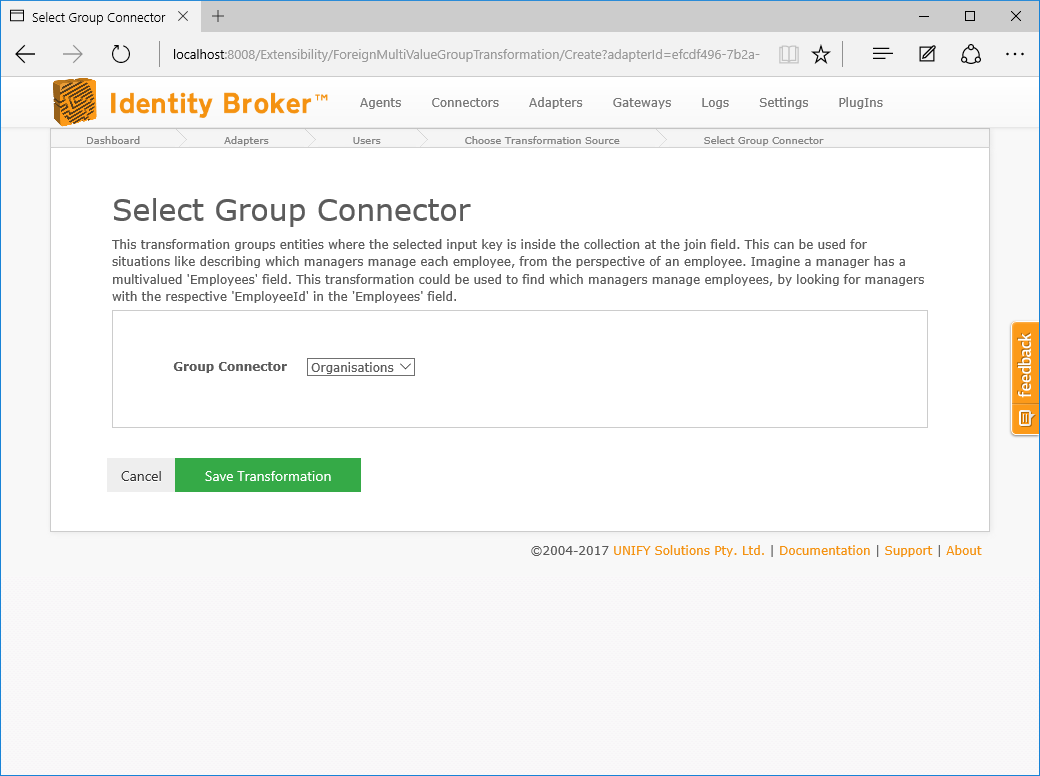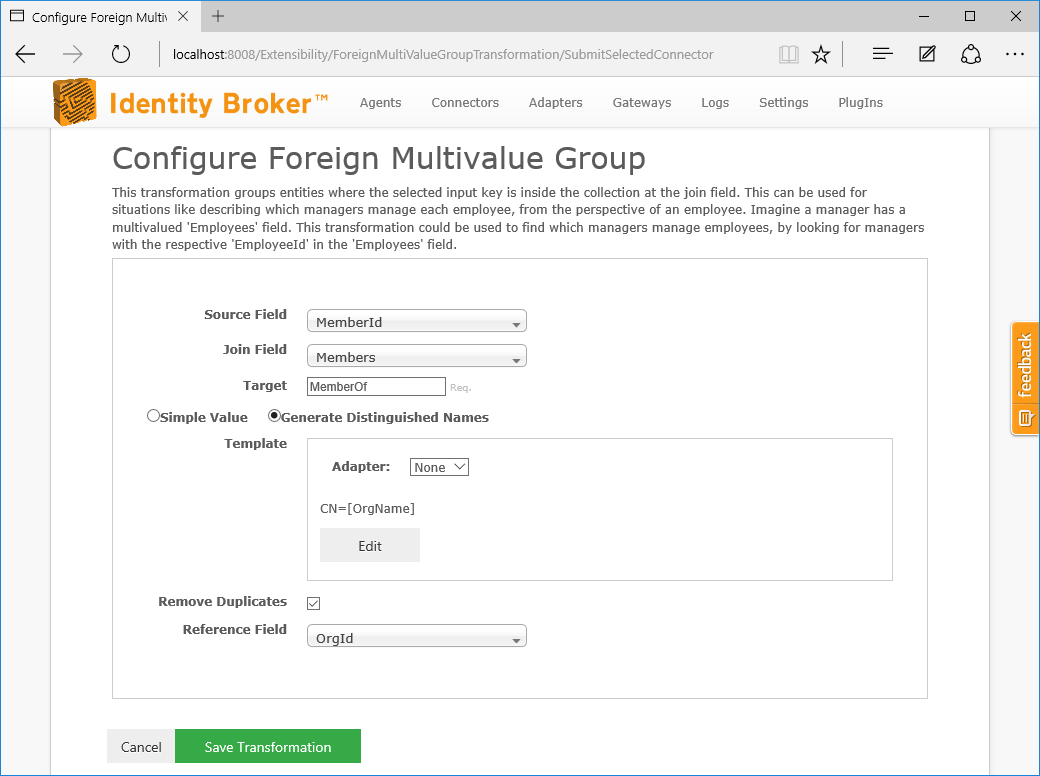Foreign Multi-value Group Transformation
Overview
The foreign multi-value group transformation is used to create a collection of values for entities that match the join criteria. In this regard it is very similar to the group transformation. The difference is that the join occurs against values inside a multi-valued field in the relational connector.
Use Cases
The membership list multi-value transformation can be used to accomplish the following:
- Generating a membership grouping for a relational connector
For example, imagine that there are two connectors:
Person
| Field | Type |
|---|---|
| PersonID | Integer |
| Name | String |
Group
| Field | Type |
|---|---|
| GroupID | Integer |
| Name | String |
| Members | Multi-value Integer |
A Foreign Multi-value Group transformation could be used to add a field to the Person object class, to define which Groups it belongs to.
Prerequisites
This transformation requires a relational connector.
Contribution
This transformation adds values from the relational entities, either by selecting one of their attributes or by defining a Distinguished Name template in a group target field.

Configuration
The membership list transformation requires the following by way of configuration:


| Attribute | Description |
|---|---|
| Group Connector | A relational connector to be grouped on. That is, this connector contains the multi-value attribute used in the transformation. |
| Source Field | The field on the adapter side against which entities on the selected relationship connector will be joined. |
| Join Field | The multi-value field on the relational connector to join on. |
| Target | This is the key column name which is the target output of the group membership list. The generated values for each matching item will be added as multi-values to this field. |
| Simple Value | Select this if you want the target field to consistent of simple values which are taken from an attribute of the matched items. |
| Generate Distinguished Names | Select this if you want the target field to be populated by generating Distinguished Names from the matched items. |
| Source | If Simple Values is selected, this determines which attribute of the matched items will be used to populate the target values. |
| Template | If Generate Distinguished Names is selected, this is the distinguished name template to be applied on the entities on the relational connector side. The resulting values will be placed in the Target field. An adapter may be selected so that the generated distinguished names are full, UNIFYBroker distinguished names, otherwise they are generated as seen. |
| Reference Field | This is the key column that must exist in the primary key values. |
The above configuration populates a MemberOf field with distinguished names where the MemberId field matches a Members value in the relational connector.
Change Processing
During the change detection process, a change will be flagged if any of the relationship fields are changed.
Customer support service by UserEcho

